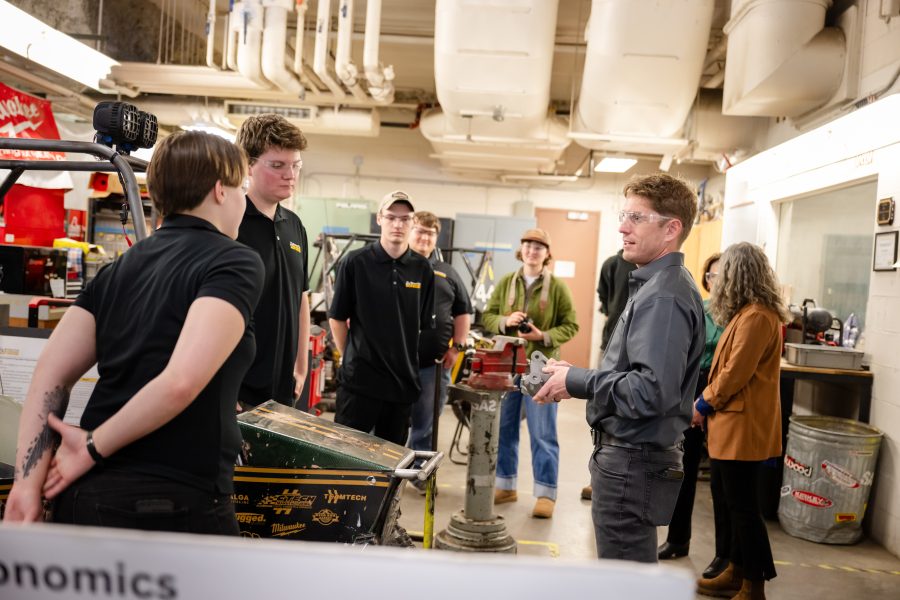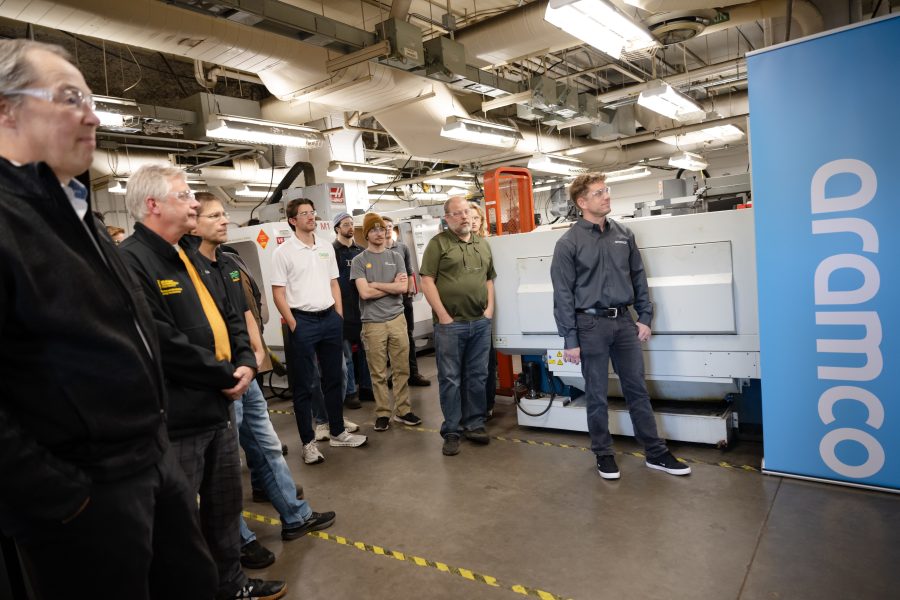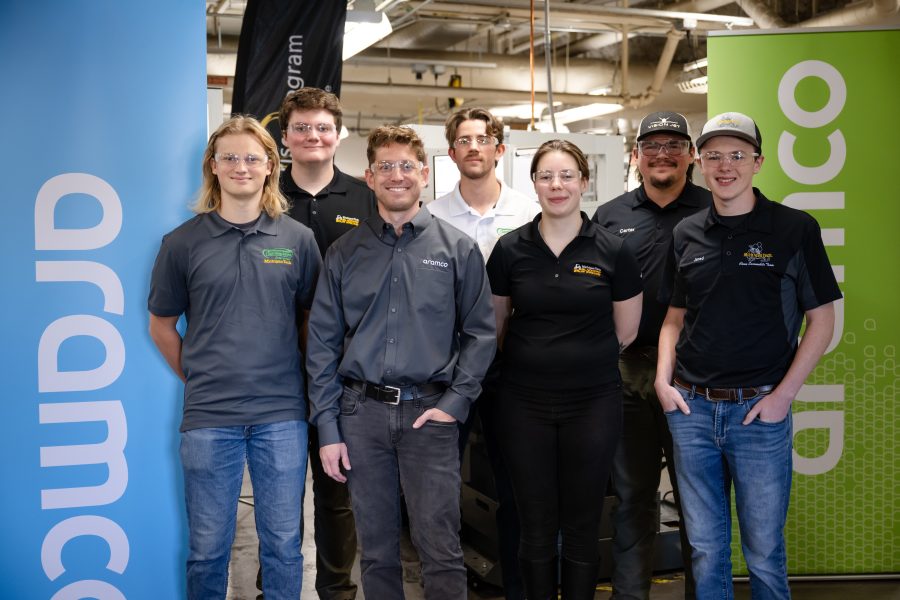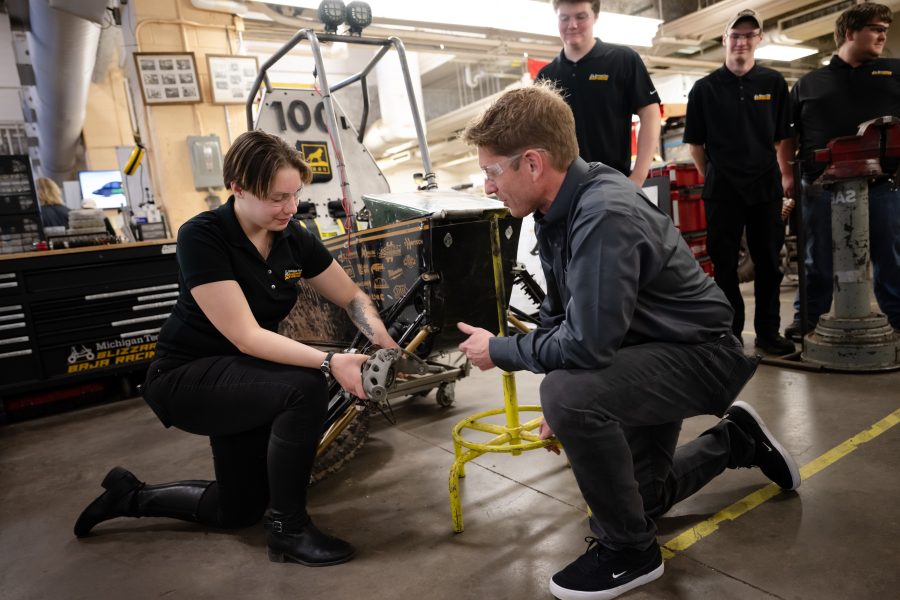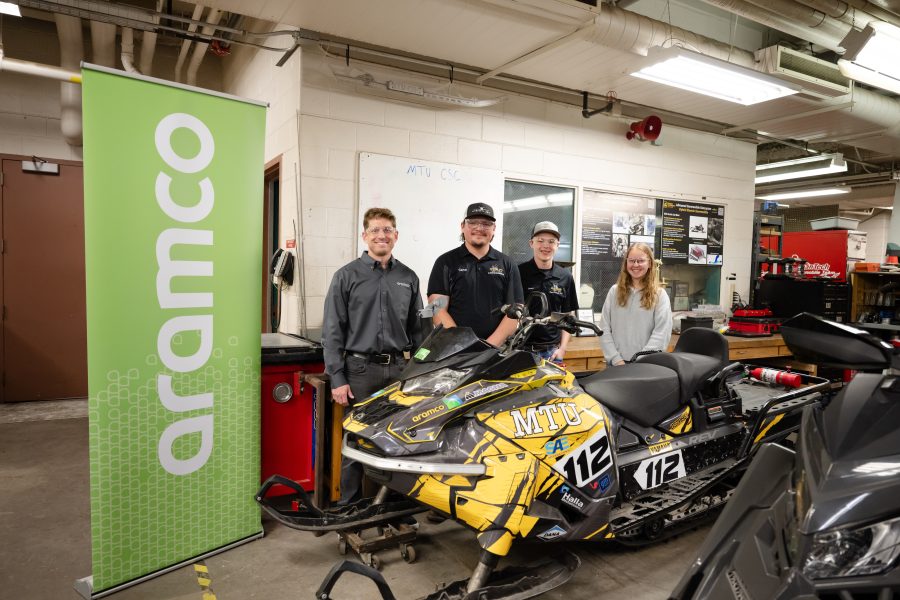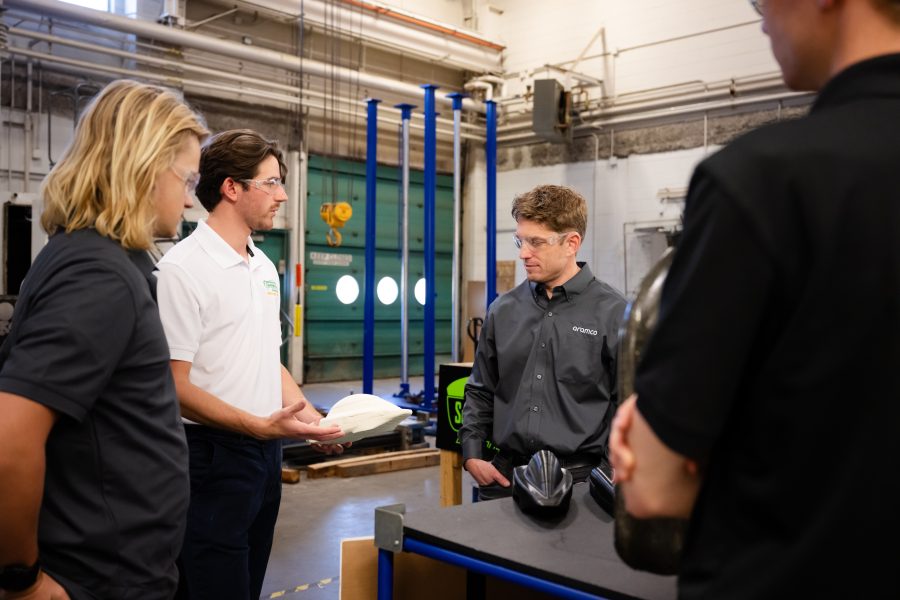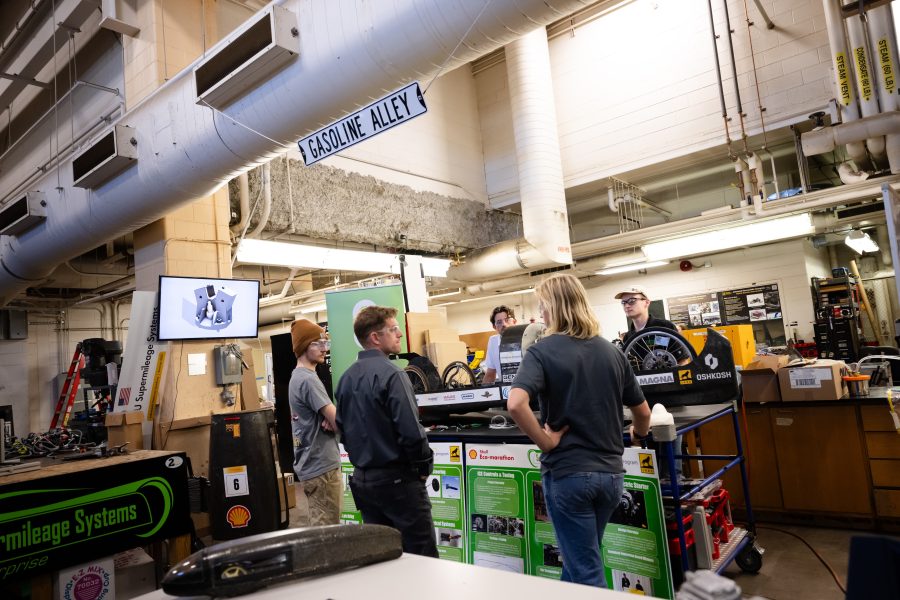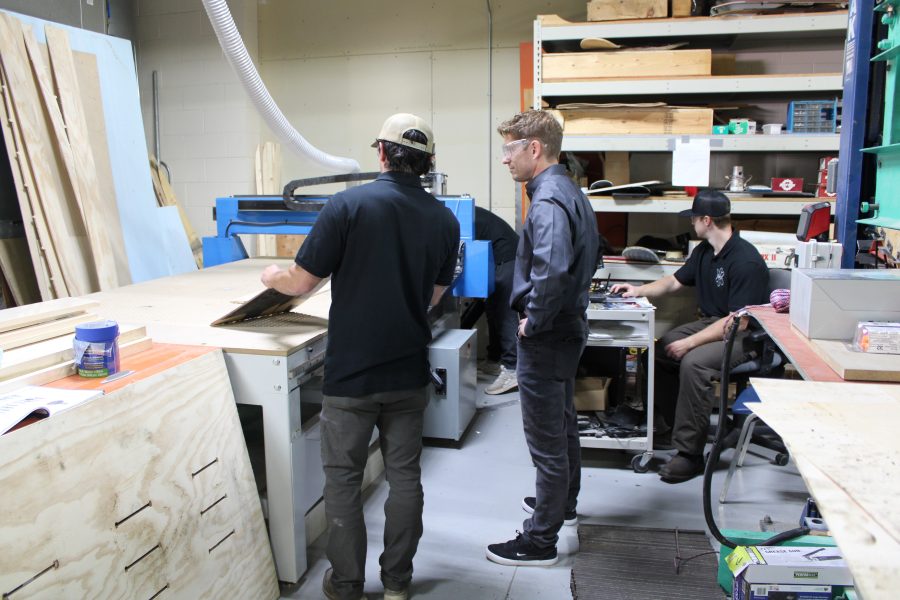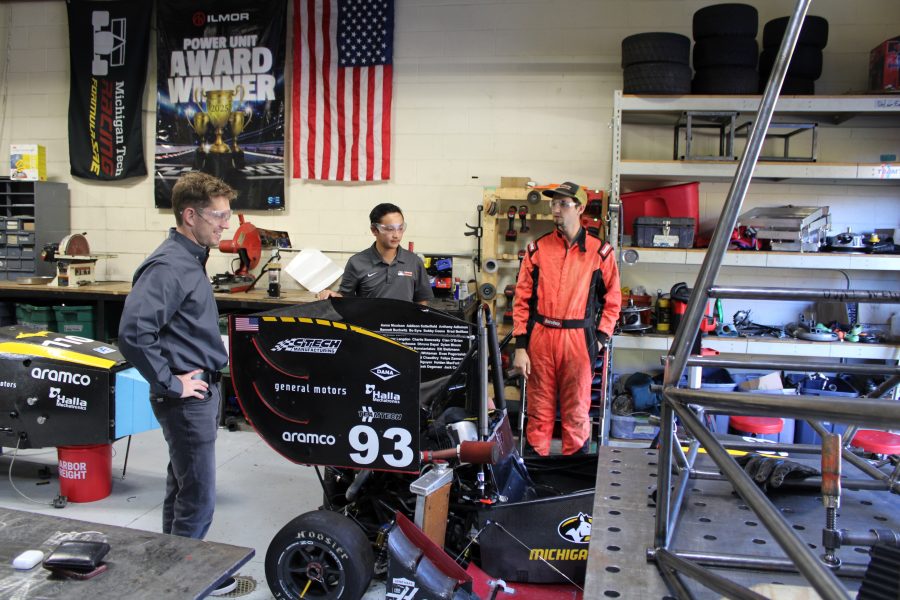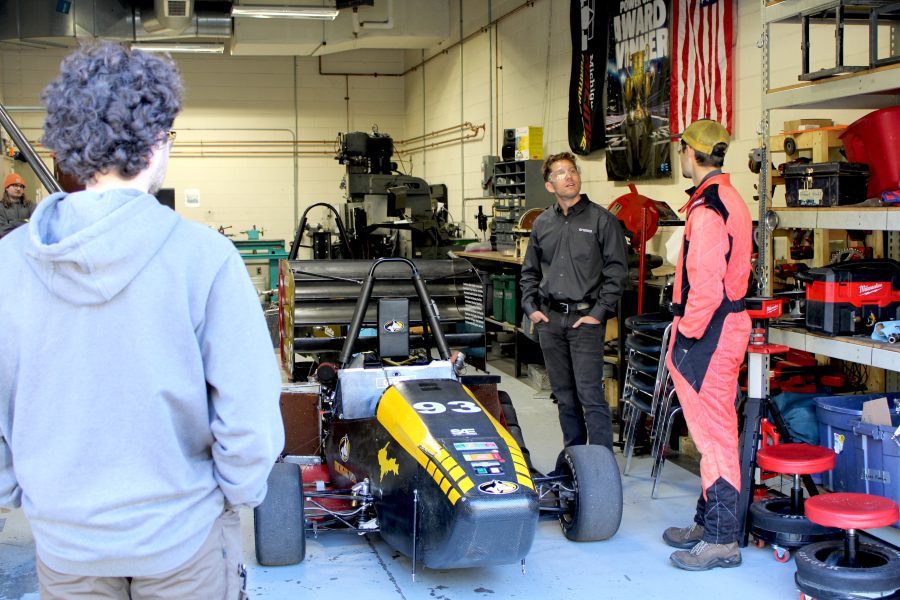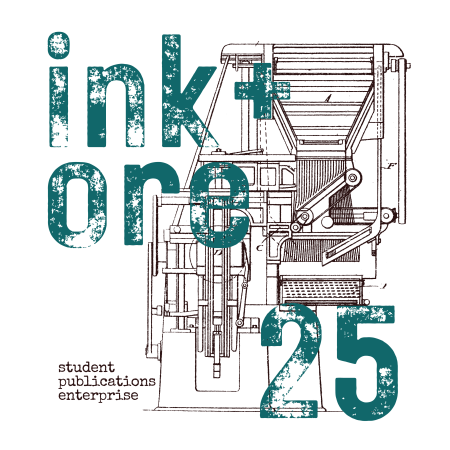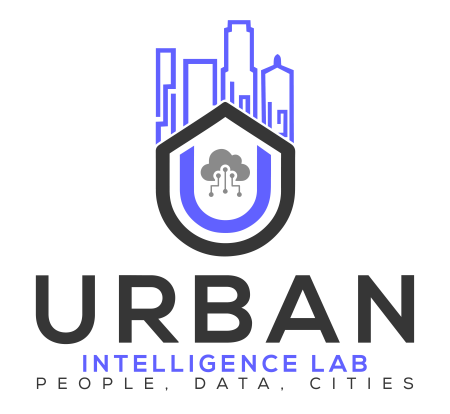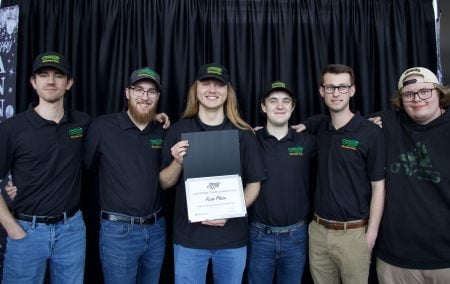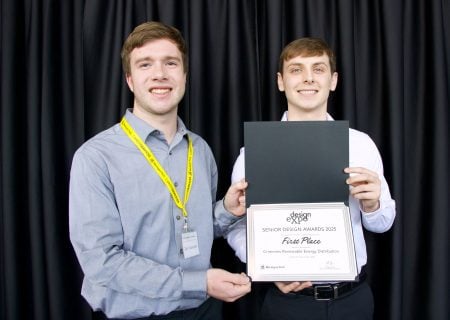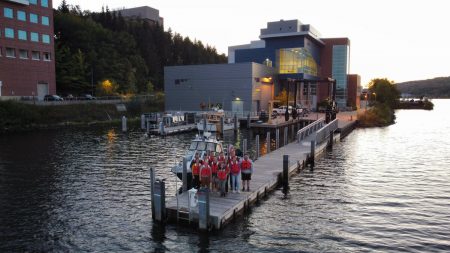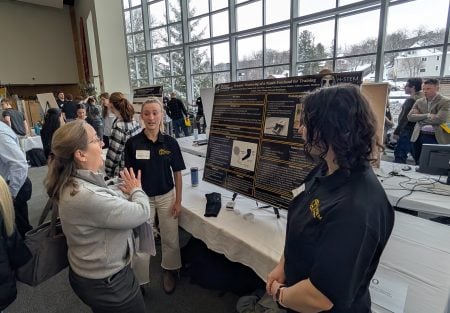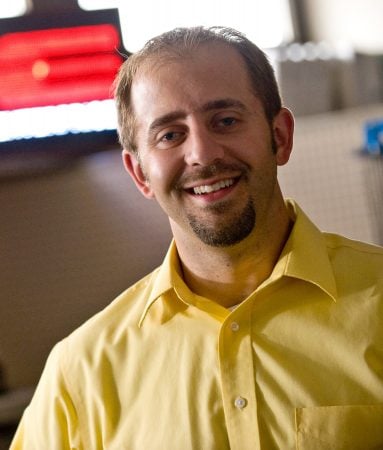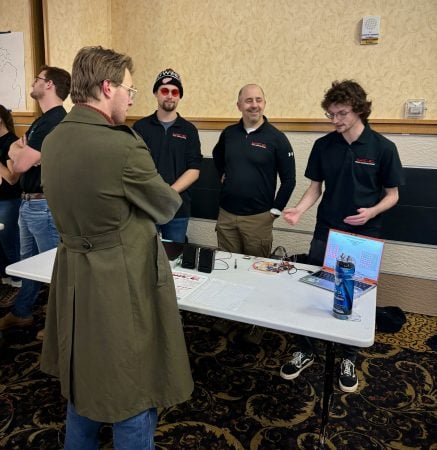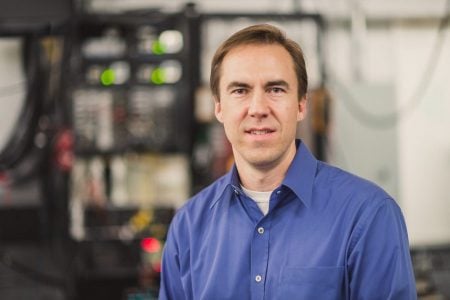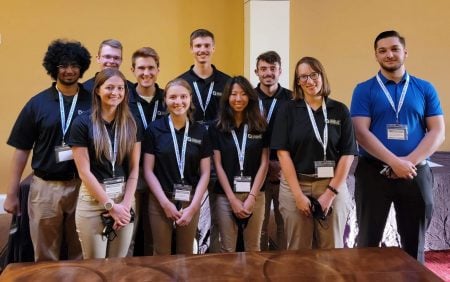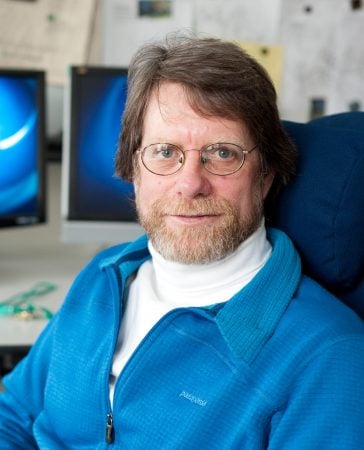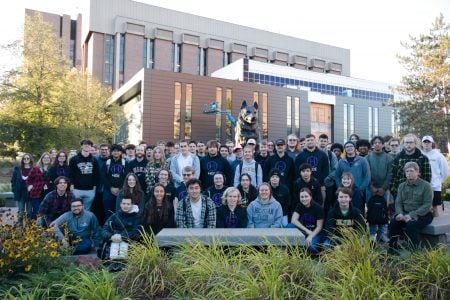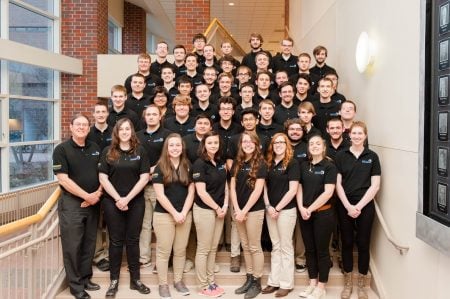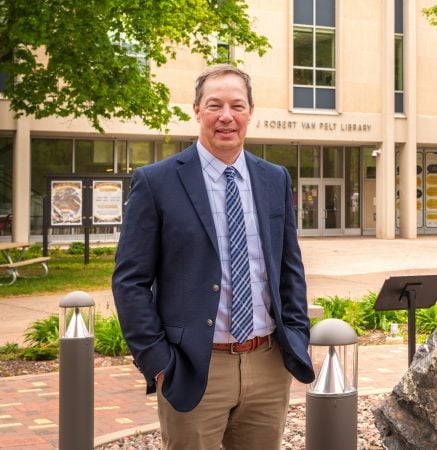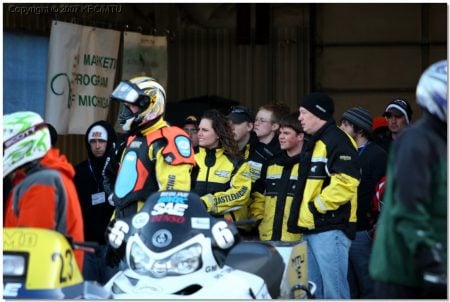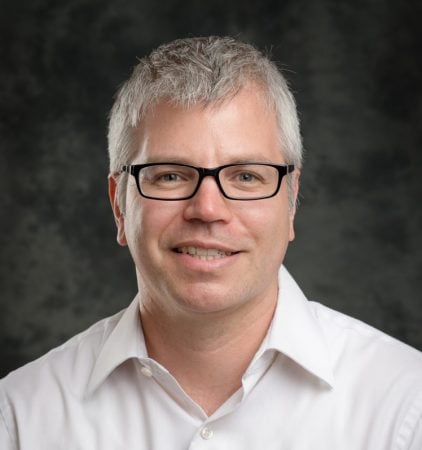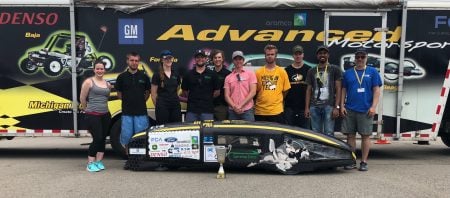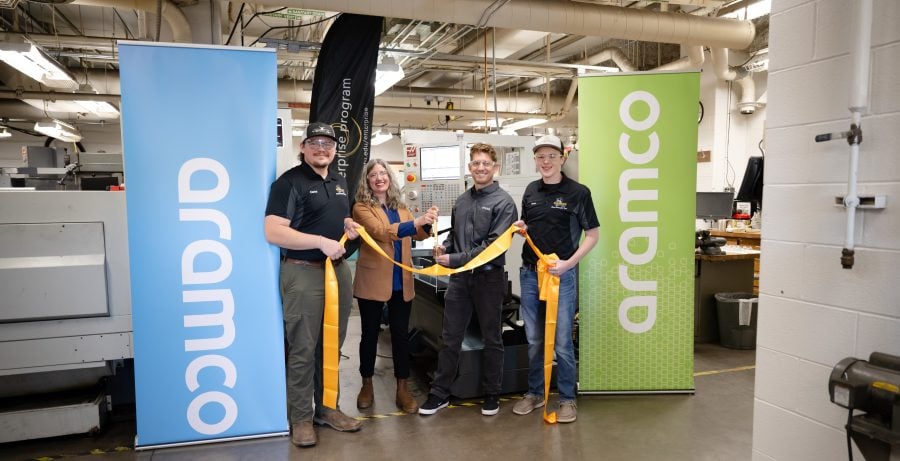
On Thursday, October 9, Aramco Americas (Aramco) leaders, University faculty, staff, and students gathered in the MMET Machine Shop at Michigan Technological University for a ribbon-cutting ceremony, marking a new chapter in hands-on, experiential learning for the Enterprise Program.
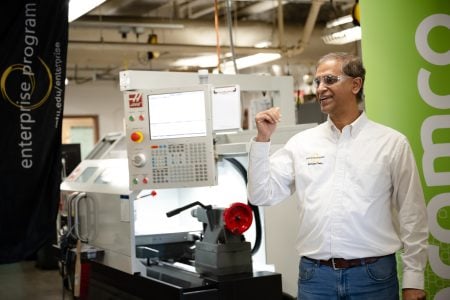
Michigan Tech was able to add two significant pieces of equipment to its Enterprise lab spaces thanks to Aramco’s support: a ShopSabre RC8 CNC router and a HAAS TL-2 CNC Toolroom lathe. The CNC router uses computer-controlled cutting to produce highly accurate parts from wood, plastics, or metal, and was co-funded with a contribution from the Mechanical and Aerospace Engineering (MAE) department. The CNC lathe enables users to turn parts up to 16 inches in diameter and 4 feet in length, and was co-funded with support from the Manufacturing and Mechanical Engineering Technology (MMET) department. Together, these machines give students access to industry-grade tools for designing and fabricating parts, molds, and prototypes with greater precision and efficiency.
Students led faculty, staff, and guests on a tour of the MMET Machine Shop and the Formula SAE Enterprise lab in the Advanced Technologies Development Center (ATDC), highlighting how they are using the new equipment made possible by Aramco’s support.
For the nearly 1,500 students who participate in Enterprise each year, these tools mean more than just state-of-the-art equipment. They represent greater confidence in design, higher-quality prototypes, and expanded opportunities to turn ideas into reality.
The Impact at Michigan Tech
Enterprise, Michigan Tech’s signature experiential program, brings together students from across disciplines to work on industry-sponsored projects, from advanced vehicles to consumer products. The program depends on collaborative lab spaces where ideas are tested, refined, and built.
“Experiential learning is at the heart of what the Enterprise Program does best, and these lab upgrades give our students new opportunities to take their ideas from concept to reality. We’re grateful for Aramco’s support, which helps us prepare students with the technical and leadership skills needed in today’s workforce.”
Already, Enterprise teams are seeing results. For BoardSport Technologies Enterprise, the new equipment is transforming the way students design and manufacture skis, snowboards, and wakeboards.
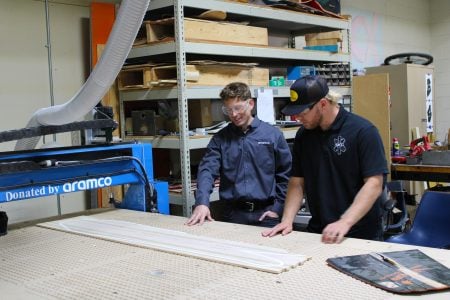
The students are using the new ShopSabre RC8 CNC router to turn precise computer designs into high-quality boards. The machine allows them to confidently match design dimensions, fine-tune performance features like flex profiles and rocker patterns, and even experiment with advanced construction methods such as custom molds and durable sidewalls. Beyond board design, the CNC router also supports other Enterprise teams across campus in creating large molds, carbon-fiber parts, and complex body panels.
“The addition of the ShopSabre CNC has been a game-changer for our students,” said Cameron Hadden, associate teaching professor in Mechanical and Aerospace Engineering and advisor for the BoardSport Technologies Enterprise. “It gives them confidence that their designs will be reflected precisely in the finished product, while also opening up new opportunities to experiment with performance features like flex profiles and rocker patterns. This machine has raised the quality of our boards—and many other Enterprise projects across campus—to an entirely new level.”
Other teams, including the Advanced Motorsports Enterprise teams, are beginning to leverage the HAAS TL-2 CNC Toolroom lathe for low-volume, highly specialized projects. The CNC lathe is a versatile piece of equipment that significantly enhances hands-on learning for students, as it allows them to complete a variety of lathe turning work while keeping the machine easy to use and understand.
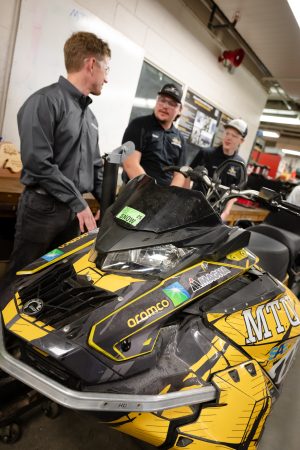
“The addition of this CNC lathe opens up new possibilities for fabricating the advanced parts our research requires, particularly in sound and exhaust emissions reduction — parts we previously did not have the capability to produce,” said Jared Ott, mechanical engineering student and co-president of the Clean Snowmobile Enterprise. “With this upgrade, our undergraduate students can push their research further, compete at a higher level, and gain a deeper understanding of how to turn their designs into reality.”
“Aramco’s long-standing support of the MTU Motorsports teams has been critical to our teams being competitive in their respective competitions. The addition of the new CNC lathe from Aramco funds will allow our students to more rapidly complete complicated machine processes — tasks that were either too time-consuming or simply not possible on our old systems. This upgrade will make our teams even more competitive, as students will now be more willing to incorporate advanced, complex parts into their designs.”
The ripple effect across 27 Enterprise teams and multiple Senior Design teams will be significant, impacting student projects in mechanical, electrical, materials, and computer engineering, as well as business, design, and countless other areas.
Aramco’s Broader Commitment
Aramco’s gift represents more than an investment in one program—it’s part of a broader commitment to STEM education in Michigan.
For more than a decade, Aramco has supported the Michigan Science Center’s Traveling Science Program, bringing interactive science experiences to schools, libraries, and community centers across Michigan, Ohio, and Indiana. Since 2012, thousands of young people and their families have discovered science in engaging, hands-on ways.
Aramco also employs Michigan Tech graduates and interns at its Research Center in Detroit, where teams are tackling advanced fuels research, focusing on how fuels can be designed and matched with engines for higher performance and lower emissions.
“We highly value MTU’s specialized laboratory capabilities, especially their advanced diagnostic tools. Our collaboration advances engine combustion and emissions improvements as we drive innovation in lower carbon transportation.”
Together, these efforts demonstrate Aramco’s ongoing role in strengthening Michigan’s education-to-industry pipeline.
Looking Ahead
The ShopSabre RC8 CNC router and HAAS TL-2 CNC Toolroom lathe are already in use, but their full potential is just beginning to be realized. As more Enterprise and Senior Design teams utilize these tools, the quality, safety, and speed of student-built projects will continue to grow and improve.
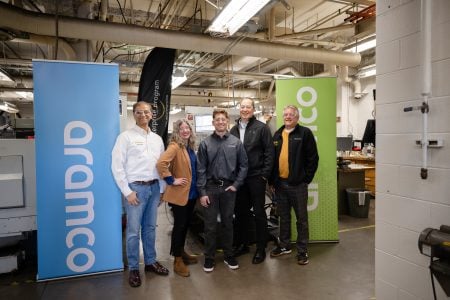
Michigan Tech and Aramco’s shared commitment to experiential education and industry partnerships ensures that tomorrow’s graduates will leave campus with not only strong technical skills but also the confidence and ingenuity to make a lasting impact.
“Hands-on, project-based education is a cornerstone of Michigan Tech’s mission. This partnership with Aramco enhances the experiences that prepare our students to be innovators, problem-solvers, and leaders.”
The ribbon-cutting was more than a celebration of new machines—it was a celebration of what students can achieve when industry and education come together.
Explore more photos from the event, as Enterprise students tour Aramco’s Andrew Baur through their lab spaces.
About the Enterprise Program at Michigan Technological University
Michigan Tech’s Enterprise Program provides students with a unique, hands-on learning experience that extends beyond the classroom. With more than 25+ Enterprise teams spanning disciplines such as engineering, business, computing, and science, students collaborate on real-world projects sponsored by industry and government partners. Enterprise students develop technical expertise, leadership skills, and teamwork experience—preparing them for success in their careers. Many teams work on cutting-edge innovations, from automotive and aerospace to sustainability and emerging technologies.Explore the Enterprise Program experience and see how you can get involved! Follow Michigan Tech Enterprise on Facebook, Instagram, and LinkedIn for the latest updates.
